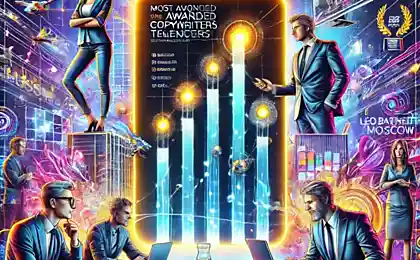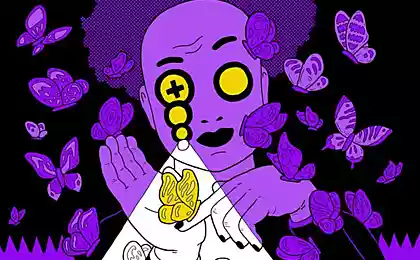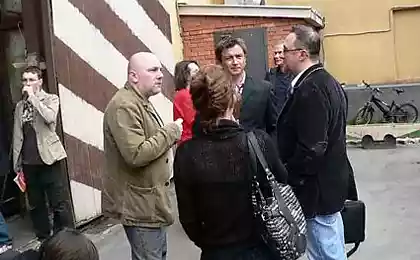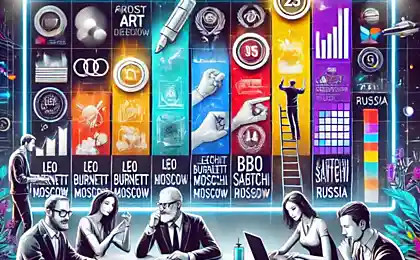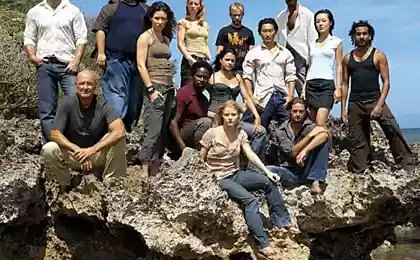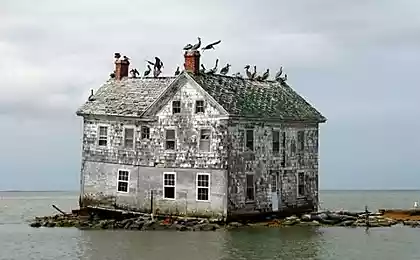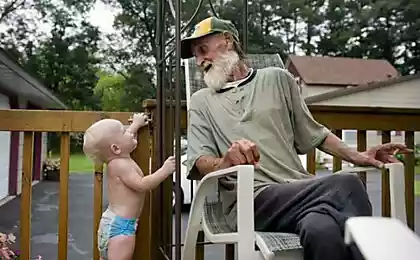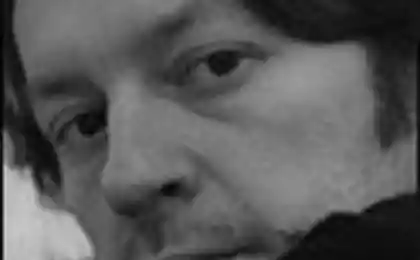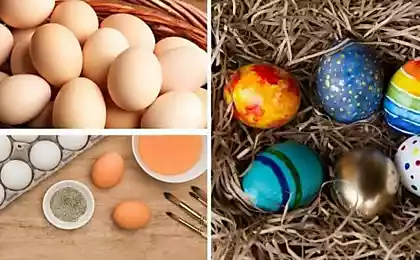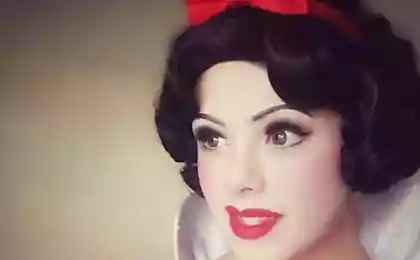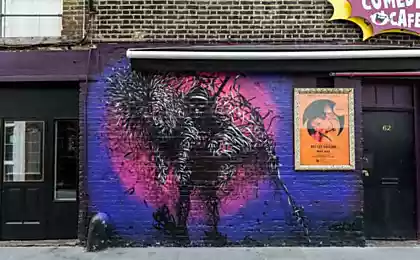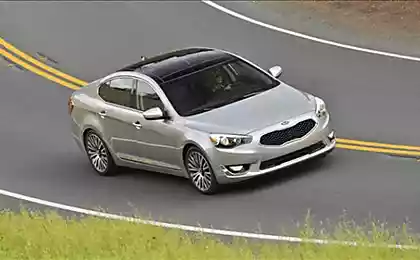553
Lazy art: technology displace the contents
In modern media art every year more and more flourishing technological fetishism: the interface of art objects and installations distracts the attention, it often happens that the residual content of art works. "Theory and practice" publishes a fragment of a lecture by Richard Castelli, chief curator of Archstoyanie 2014 where he opposes lazy art, infected late conceptualism, the risk of killing the true meaning of creativity.
The first thing I would like to say that I'm not opposed to conceptual art, but I protest against the late and lazy conceptual art. If you studied art in school, you may substitute in your mind the rules of academic work or academic painting academic thinking. In a situation with new media to make such substitution easier, the art could easily turn into a lazy and not very good. An ideal ground for breeding of lazy conceptual art becomes a process interface, which are hiding installations and art objects, having at its core powerful self-conception.
"Each viewer of our 3D-panoramas, in fact, is part of the Actaeon, who is traveling through the intestines of a dog"I Once did a project with one of the Austrian artist — circular 3D panorama, where the image consists of small diverse pieces, surrounds the viewer from all sides, and it moves him. In this interface incarnated serious content, inspired by the "Metamorphoses" of Ovid. A colleague of mine for 15 years, took 600 videotracks, triggering the different formats of filming. We selected 22 000 fragments of these films, and put them together, imagine that each of the cells — the cage dogs of Actaeon. Actaeon, according to mythology, was a hunter who once accidentally saw Artemis naked in the woods. He fell in love with her, but the goddess didn't like it. She splashed Actaeon with water, thus turning him into a stag, and said that allows him to tell everyone about what he saw if he'd be able to do it. But the hero, of course, to say anything could not: Actaeon the stag pursued by his hunting dog and ate it. Each viewer of our 3D-panoramas, in fact, is part of the Actaeon, who is traveling through the intestines of the dog. All that the visitor sees around him, — a fragment of memories Actaeon.
The first time we showed this work in Shanghai, the exhibition, which I supervised. It was a huge success, people were delighted. After the show we turned to the engineer and the developer of this interface, and said to him: "we all did great, but this, as you know, only five percent of the work that we were doing". The engineer was in shock, because for him the project was completely finished. But we continued to work on his project, made a second, third, and even seventh version. Similar seldom happens. Artists usually stop after the first version, saying something like: "How wonderful, people are all like, let's hurry up and collect something else!".
The moral of this story is that in contemporary art, it often happens that you develop an interface, some lotion, and limit themselves to demonstrate it again and again. That is the essence of the project becomes the technical interface and nothing more. With this kind of laziness I'm trying to fight. Artists should spend their time developing content, not interface. I like projects where interactivity is not evident, where everything is natural. This, in my opinion, very important because in 90% of cases interactivity impoverishes works, makes art objects in the interface fetishism, fetishism of technology.
I am not opposed to conceptual art and against technological interfaces, I just want to say that for me the interface will never be an end in itself. The real art is different from toys in the extent to which art is different from design. The design presents an object as the result, the art still considers the result of feelings caused by the object and its meanings. All the work in a contemporary media art situated between design and art. Some projects contain 90% art and 10% design, some contain more design than art, but still art. This permissible variation. But if the project 99% of design, then, forgive me, is not art.
Source: theoryandpractice.ru
The first thing I would like to say that I'm not opposed to conceptual art, but I protest against the late and lazy conceptual art. If you studied art in school, you may substitute in your mind the rules of academic work or academic painting academic thinking. In a situation with new media to make such substitution easier, the art could easily turn into a lazy and not very good. An ideal ground for breeding of lazy conceptual art becomes a process interface, which are hiding installations and art objects, having at its core powerful self-conception.
"Each viewer of our 3D-panoramas, in fact, is part of the Actaeon, who is traveling through the intestines of a dog"I Once did a project with one of the Austrian artist — circular 3D panorama, where the image consists of small diverse pieces, surrounds the viewer from all sides, and it moves him. In this interface incarnated serious content, inspired by the "Metamorphoses" of Ovid. A colleague of mine for 15 years, took 600 videotracks, triggering the different formats of filming. We selected 22 000 fragments of these films, and put them together, imagine that each of the cells — the cage dogs of Actaeon. Actaeon, according to mythology, was a hunter who once accidentally saw Artemis naked in the woods. He fell in love with her, but the goddess didn't like it. She splashed Actaeon with water, thus turning him into a stag, and said that allows him to tell everyone about what he saw if he'd be able to do it. But the hero, of course, to say anything could not: Actaeon the stag pursued by his hunting dog and ate it. Each viewer of our 3D-panoramas, in fact, is part of the Actaeon, who is traveling through the intestines of the dog. All that the visitor sees around him, — a fragment of memories Actaeon.
The first time we showed this work in Shanghai, the exhibition, which I supervised. It was a huge success, people were delighted. After the show we turned to the engineer and the developer of this interface, and said to him: "we all did great, but this, as you know, only five percent of the work that we were doing". The engineer was in shock, because for him the project was completely finished. But we continued to work on his project, made a second, third, and even seventh version. Similar seldom happens. Artists usually stop after the first version, saying something like: "How wonderful, people are all like, let's hurry up and collect something else!".
The moral of this story is that in contemporary art, it often happens that you develop an interface, some lotion, and limit themselves to demonstrate it again and again. That is the essence of the project becomes the technical interface and nothing more. With this kind of laziness I'm trying to fight. Artists should spend their time developing content, not interface. I like projects where interactivity is not evident, where everything is natural. This, in my opinion, very important because in 90% of cases interactivity impoverishes works, makes art objects in the interface fetishism, fetishism of technology.
I am not opposed to conceptual art and against technological interfaces, I just want to say that for me the interface will never be an end in itself. The real art is different from toys in the extent to which art is different from design. The design presents an object as the result, the art still considers the result of feelings caused by the object and its meanings. All the work in a contemporary media art situated between design and art. Some projects contain 90% art and 10% design, some contain more design than art, but still art. This permissible variation. But if the project 99% of design, then, forgive me, is not art.
Source: theoryandpractice.ru
